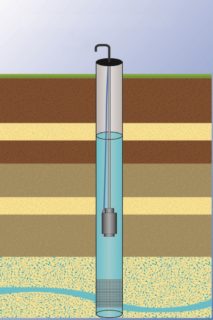Providing the site with water is the first task of its owner. The more plans for the improvement of your site, the more you will feel the lack of water supply. Water is needed for construction work, garden, personal daily needs.
What is an aquifer
Is it necessary to clean the aquifer
Water from wells, especially artesian ones, unlike shallow waters, is less often clogged with organic combinations, bacteria, hazardous metals and other anthropogenic pollutants.
There are no “permanent” wells for water supply. Unfortunately, someday the owner of the drainage well will face difficulties. It is not good if the aquifer is depleted, you will need to drill again or make the existing well deeper. It is difficult and extremely costly. It is another matter if a well is contaminated - it is easier and cheaper to prevent it than to “repair” it.
Extending the service life of the source will contribute to the fulfillment of certain conditions of use:
- Accurately follow the preferred drilling technology. Closely observe the tightness of the casing, the integrity of the filter.
- Immediately after the end of drilling operations, wash the source until the purest water appears.
- Protect the well from the invasion of shallow waters, blockages by placing a caisson, a head. As a temporary solution, simply seal the top of the casing.
- Before starting to use it, it is imperative to choose and install a water-submersible pump on the required elevation, taking into account the flow rate of the water well.
- Do not use a vibrating pump to supply water. Shaking in the casing, depending on the type of soil, to a great or least degree causes sand to enter the well or contributes to the siltation of the adjacent soil. A cheap and ordinary vibrator can be used for a short time; a centrifugal pump is needed for stable operation.
- The well is not required to stand indiscriminately. An impeccable mode of operation is the daily pumping out of some 10 or hundreds of liters of water. It is provided if people always live in the house. If this is unrealistic, it is necessary to constantly, at least once every 2 months, pump out at least 100 liters from the well. water.
Observance of these tips, of course, will not help to exclude well contamination in the future. But it will postpone this problem, guaranteeing the maximum possible resource of effective operation for this source.
We bring the water up to standards
- Iron removal and demanganation (removal of manganese). Often, seeing the water subsequently shaking the well, people, recognizing it as visually purified, begin to use it to supply water to their own home without prior analysis in a water laboratory.However, over time, a rusty and sometimes dark bloom forms on the plumbing, a chestnut sediment is formed in the kettle, and the water in the jar first turns white, and later yellowish or even brown with black sediment. This is all due to the iron contained in the water in a non-oxidized bivalent soluble form. It is oxidized by air and falls in the form of a yellowish or chestnut sediment. Such water often contains a ferrous taste.
- Negative effects of iron and manganese. Iron and manganese in drinking water have a negative impact on plumbing and human health. On plumbing, a yellowish, and due to manganese, dark plaque forms, which is difficult to remove even with the most powerful cleaning agents. Iron, although it does not show such a powerful negative effect on human health, spoils the skin and hair. Iron compounds accumulate in the liver and over time destroy its cells.
- Oxidation. Oxidation should be carried out first. For these purposes, the procedure of aeration and oxidation with atmospheric oxygen or reagent oxidation is used. In the form of reagents, sodium hypochlorite, hydrogen peroxide or potassium permanganate are used. Air aeration can be replaced by ozonation, especially in the presence of manganese, since ozone is considered the most powerful oxidizing agent than air. If you rarely use the well, then it is possible to simply stand the water by placing, for example, an ordinary reservoir in the attic of the house. Getting into it, water will come into contact with the atmosphere, iron will oxidize, and a precipitate will form. The area for draining water from the tank must be larger than the resulting sediment.
- High rigidity and ways to resist it. Speaking about hardness, most of all imply the presence of calcium ions in water. This is part of the truth. However, magnesium cations are also involved in the formation of rigidity, and among the anions, mainly hydrocarbon ions. Whether your source is characterized by rigidity is quite simple to realize: this is confirmed by scale on the heating devices.
Subsequently, the installation and start-up of the treatment facility was recommended to re-select the water test and deliver it for research to a laboratory that is not associated with the company that installs the water treatment equipment. This will make it possible not only to control the work of the company that provided the equipment, but also, if necessary, to adjust the operation of the purification system.











For more than thirty years I have been using vibration pumps in a well, there are no problems and I think there will be no problems. The well gives two cubes stably.
I took a garage compressor to it, an oxygen hose and a plastic pipe for 32, I connected all this by making an airlift and threw all the shnyaga to the top, thus eliminating jamming of the vibration pump in the well and other risks